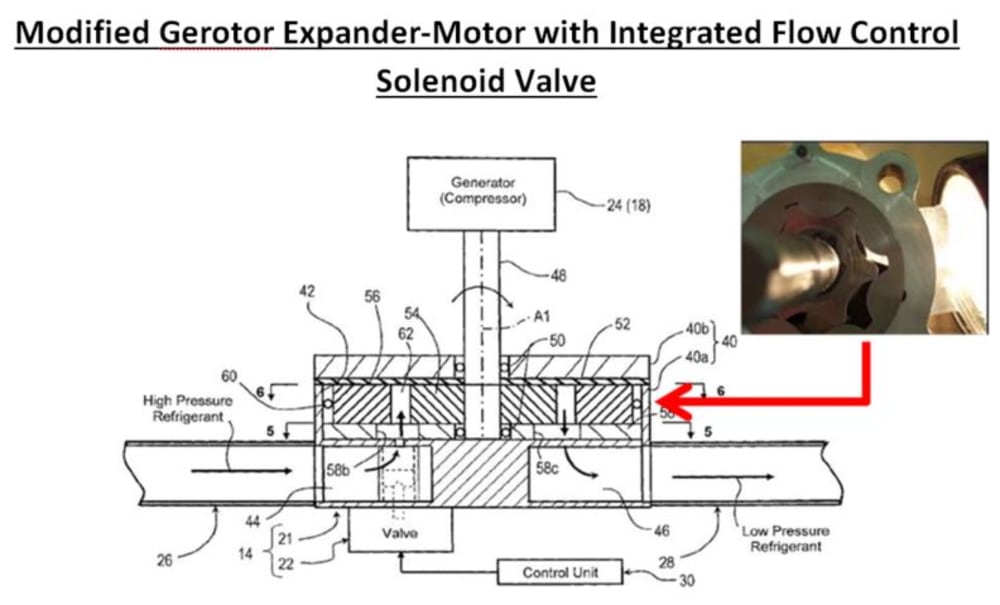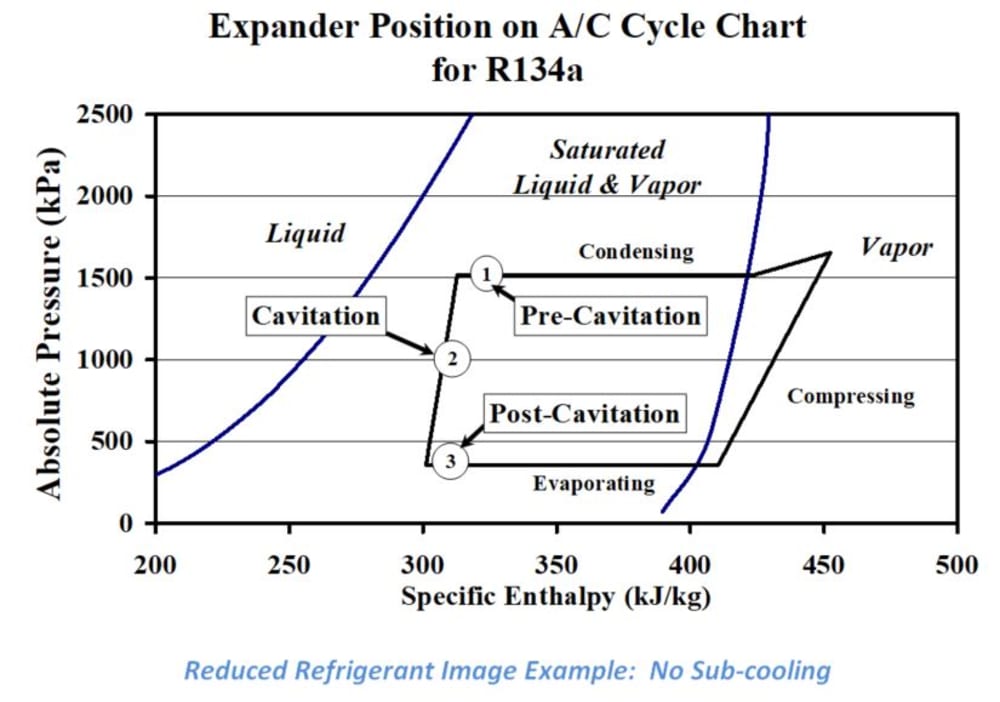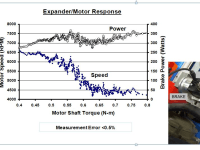The conventional refrigeration cycle develops high pressure refrigerant in the condenser that is throttled to a low pressure and temperature for cooling air within an evaporator. This throttling process involves little more than passing the refrigerant through a small orifice interface (or expansion valve). The power recovery concept is to replace the throttling device with an expander or motor. The intention is to extract energy from the high pressure refrigerant as it passes to the evaporator’s low pressure. All the while, the evaporator’s cooling capability must be maintained - as it is with the expansion valve configuration. This device enhances energy efficiency while delivering the intended cooling function (or heating function in the case of a heat pump). It was found that a reduction of system refrigerant content benefits power recovery, which reduces the need for these chemicals.
Theoretically, the energy extraction potential is augmented by the fact that a portion of the refrigerant fluid changes phase from a high pressure liquid to a low pressure vapor in an A/C or refrigeration system (i.e. containing R134a, R1234yf). A 70:1 vapor to liquid volume change ratio occurs during the typical expansion process as refrigerant passes from the high pressure region to the low pressure region though an orifice or expansion valve. This ‘explosive’ event (cavitation) is a compelling opportunity for power recovery from the refrigeration system by replacing the expansion valve with a motor. Power recovery at this point in the cycle, reduces the energy (enthalpy) content of the refrigerant as it enters the evaporator. Thus, the coefficient of performance is significantly improved due to an enhanced refrigeration effect and a reduction of the net power to operate the system due to the recovered energy. SAE PAPER #2012-01-1202 explains more detail of a successful prototype and the learning that generated a variety of related and critical US Patents. Some of the content is summarized below:
Significant technical challenges to manage the evaporator's required refrigerant mass flow for cooling and the mass flow through the power recovery hardware in prior art approaches under-perform at best. It turns out that the "sweet spot" where cavitation (explosion of liquid to vapor) occurs must be controlled to reside within the motor to generate profound power recovery. Physically, the expander-motor is between the condenser and evaporator. However, the phase change can occur before or after the expander-motor and thus forfeit significant power recovery. The "location" of the phase change depends on the ability to empty the low-side of refrigerant. If the pumping (compressor) is somewhat aggressive, the cavitation event likely occurs ahead of the motor (near the condenser). Conversely, liquid refrigerant can flood through the motor with cavitation happening in the evaporator with a less aggressive pumping action.
This technical challenge was met by the introduction of a low pressure drop solenoid valve just upstream of the expander-motor that is managed to maintain the evaporator's target low pressure and temperature conditions. In effect, liquid refrigerant is backed up to be released through the motor as needed.
Like this entry?
-
About the Entrant
- Name:Ronald Eisenhour
- Type of entry:individual
- Software used for this entry:Self Made - Excel...
- Patent status:patented








